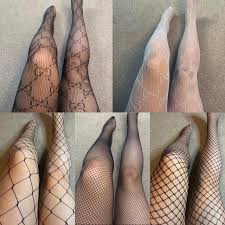Pantyhose Stories

Pantyhose, often referred to as tights or nylons in some regions, have been an integral part of fashion and culture for decades. From their invention in the mid-20th century to their evolution into a symbol of femininity and professionalism, pantyhose have a rich history that intertwines with various narratives, stories, and perceptions. In this exploration, we delve into the multifaceted world of pantyhose, uncovering their stories, styles, and symbolism.
The Origins and Evolution of Pantyhose:
The concept of pantyhose can be traced back to the 1950s when Allen Gant Sr. introduced the world to Panti-Legs, a revolutionary garment that combined panties and stockings into a single seamless piece. This invention not only revolutionized women’s fashion but also brought a new level of convenience and comfort.
Throughout the 1960s and 1970s, pantyhose became a staple in women’s wardrobes, symbolizing elegance, professionalism, and modesty. They were worn by women of all ages and backgrounds, from office workers to fashion icons. The sheer variety of styles, colors, and patterns allowed for self-expression and creativity, making pantyhose a versatile accessory for any occasion.
Pantyhose in Popular Culture:
Pantyhose have played prominent roles in various aspects of popular culture, from film and television to music and literature. In movies like “The Graduate” and “The Devil Wears Prada,” pantyhose are depicted as symbols of femininity, sensuality, and power. Actresses like Audrey Hepburn and Marilyn Monroe helped popularize the glamorous image of pantyhose, adding to their allure and mystique.
In music videos and stage performances, pantyhose are often used to enhance costumes and convey specific themes or messages. Artists like Madonna and Beyoncé have incorporated pantyhose into their iconic looks, using them to exude confidence, sexuality, and style.
Pantyhose in the Workplace:
In many professional settings, pantyhose are still considered essential attire for women. They are often seen as a sign of professionalism, attention to detail, and adherence to dress codes. In industries such as finance, law, and hospitality, wearing pantyhose is often expected, especially for formal events or client meetings.
However, attitudes towards pantyhose in the workplace have evolved over time. With the rise of business casual attire and the emphasis on comfort and flexibility, some companies have relaxed their dress codes, allowing employees to forego pantyhose in favor of more casual alternatives. This shift reflects changing societal norms and preferences, as well as a growing emphasis on individuality and personal expression in the workplace.
The Symbolism of Pantyhose:
Beyond their practical function, pantyhose carry deep symbolic meaning in various cultural contexts. In some societies, they are associated with notions of femininity, modesty, and tradition. In others, they symbolize liberation, empowerment, and self-expression. The way pantyhose are perceived and interpreted can vary widely depending on factors such as age, gender, and cultural background.
For some individuals, wearing pantyhose is a form of ritual or self-care, providing a sense of confidence and empowerment. For others, it may be seen as a burdensome expectation imposed by societal norms. Regardless of individual perspectives, pantyhose continue to evoke strong emotions and opinions, sparking debates about gender, fashion, and identity.
The Future of Pantyhose:
As fashion trends continue to evolve and society becomes increasingly diverse and inclusive, the future of pantyhose remains uncertain. While some may argue that pantyhose are outdated relics of the past, others believe that they will continue to endure as timeless classics with enduring appeal.
In recent years, there has been a resurgence of interest in vintage fashion and retro styles, leading to a renewed appreciation for pantyhose and other hosiery items. Designers and brands are experimenting with new materials, textures, and designs, reinventing pantyhose for the modern era.
Ultimately, the fate of pantyhose will be determined by shifting cultural attitudes, consumer preferences, and market dynamics. Whether they fade into obscurity or remain a cherished staple of women’s fashion, pantyhose will always hold a special place in the annals of style and symbolism.
Conclusion
pantyhose are more than just garments; they are symbols of history, culture, and identity. From their humble beginnings as practical solutions to fashion challenges, pantyhose have evolved into iconic accessories that evoke a wide range of emotions and interpretations. Whether embraced for their elegance and sophistication or critiqued for their conformity and constraints, pantyhose will continue to inspire fascination and debate for generations to come.






